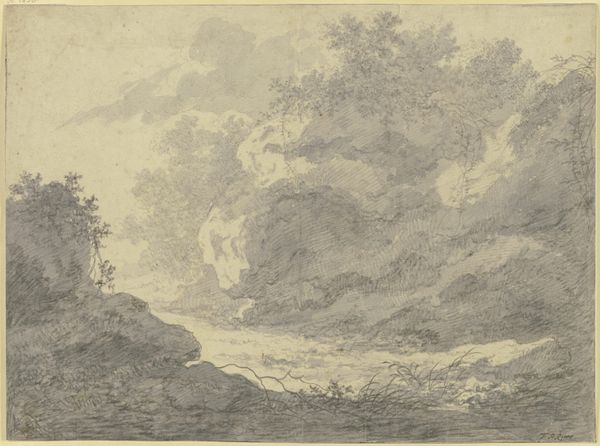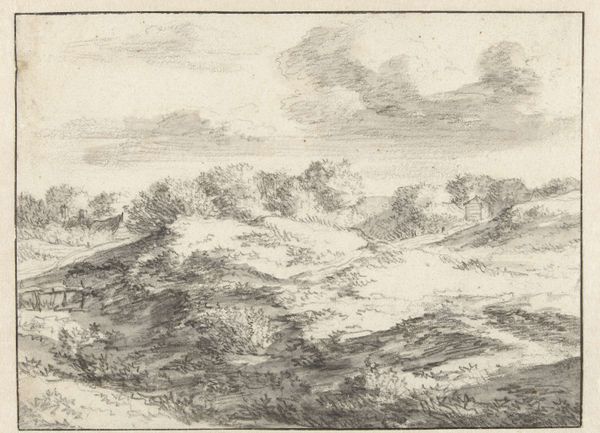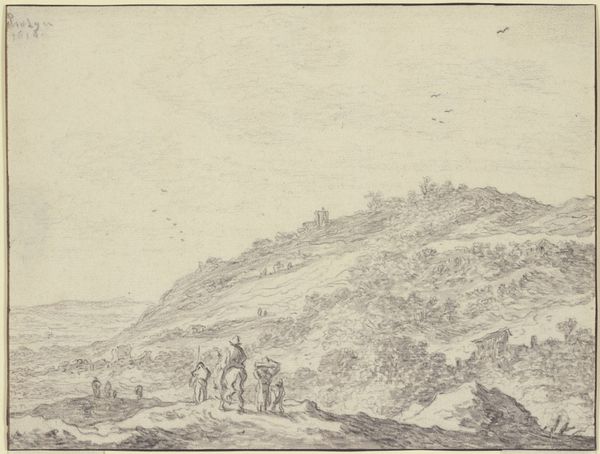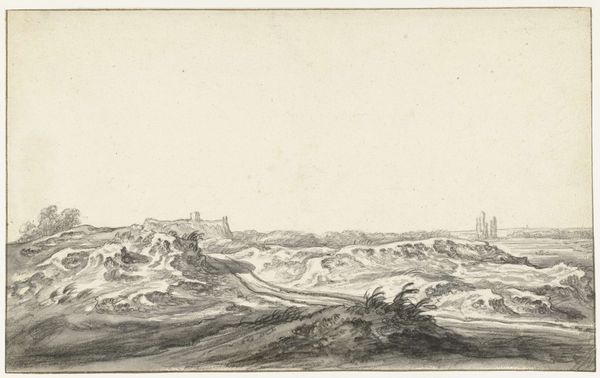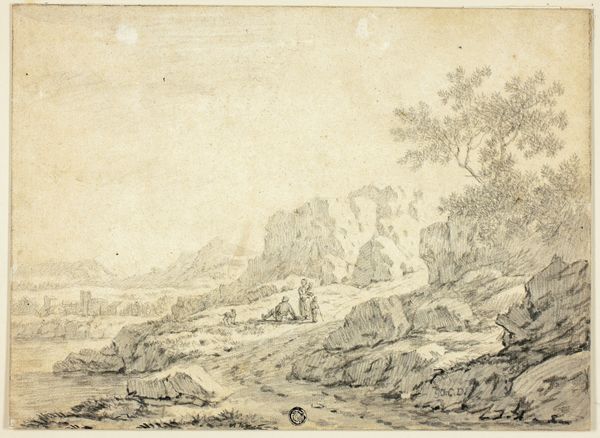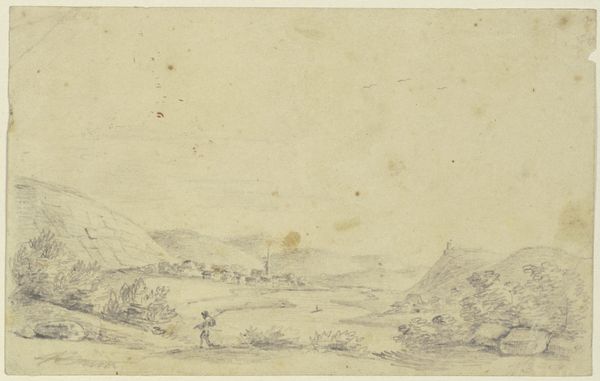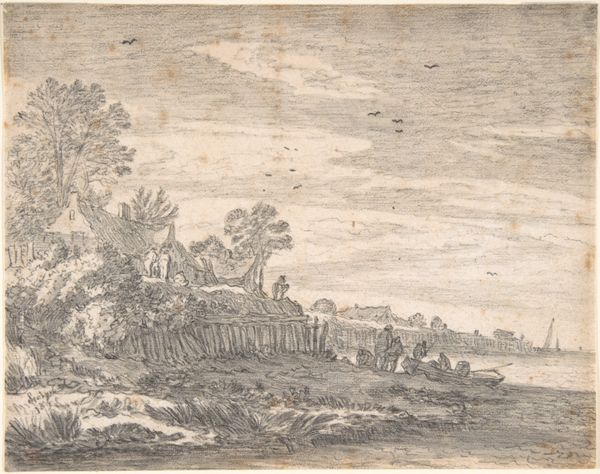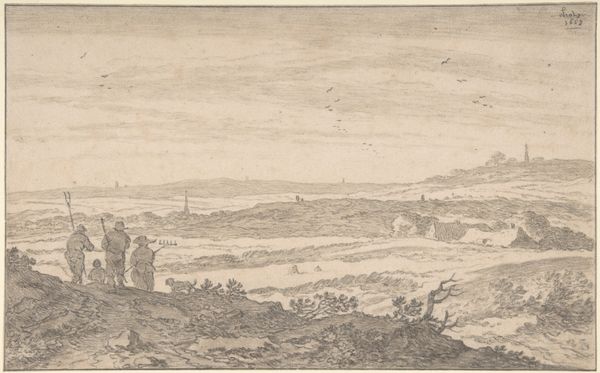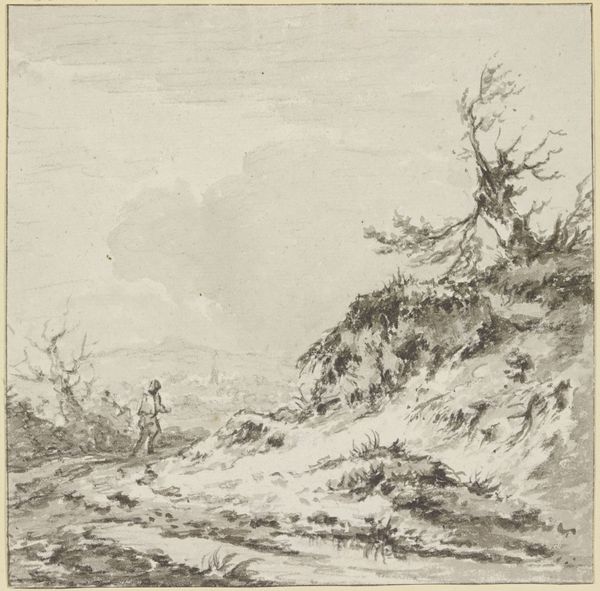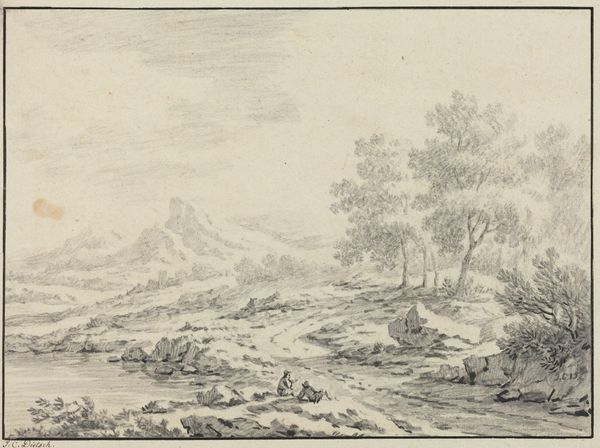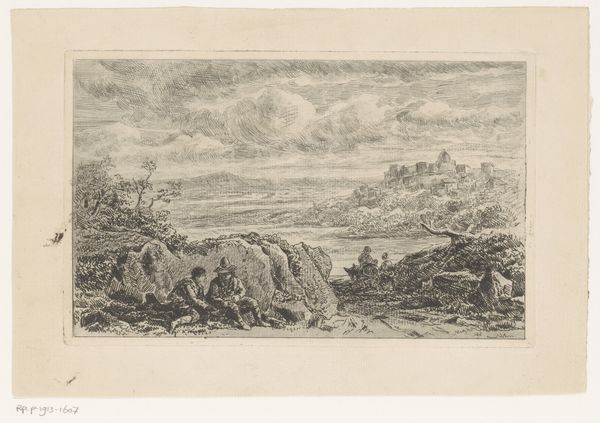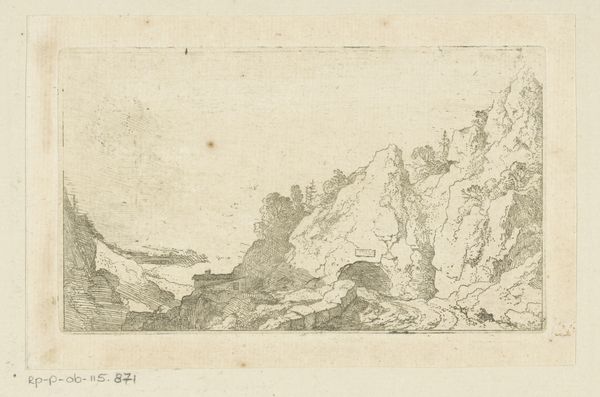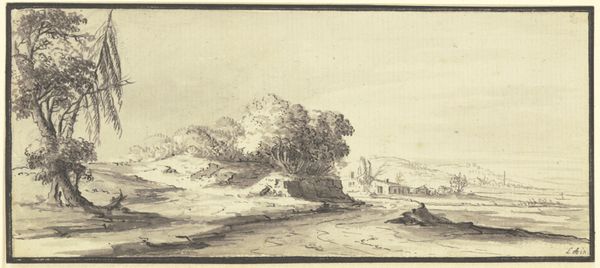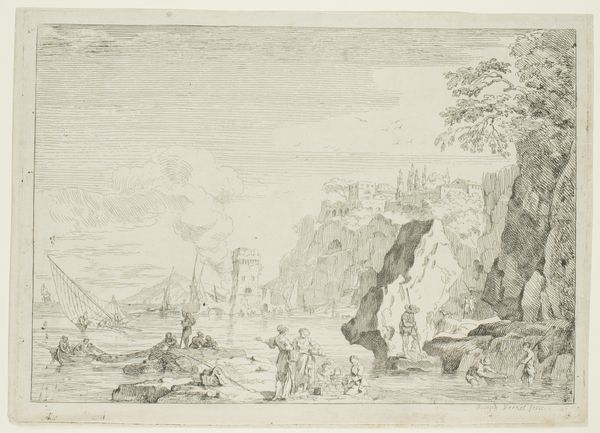
Hügeliges Terrain mit Schafherde und Schäfer, in der Ferne ein Kirchturm 1654
0:00
0:00
drawing, ink, chalk
#
drawing
#
baroque
#
landscape
#
ink
#
chalk
#
line
#
14_17th-century
#
realism
Copyright: Public Domain
Editor: We are looking at "Hügeliges Terrain mit Schafherde und Schäfer, in der Ferne ein Kirchturm," a chalk and ink drawing from 1654 by Pieter Molyn the Elder. The rolling hills seem to stretch on forever, it's vast, and kind of lonely, really. What strikes you most when you look at it? Curator: The drawing style is fascinating; note the church steeple on the horizon. Churches, throughout history, represented more than just spiritual centers. They symbolized community, stability, and even power. Notice how Molyn places it so centrally, yet it's dwarfed by the landscape. Editor: So, the landscape is dominant despite the church? What does that signify? Curator: It could suggest a shifting focus—perhaps away from centralized religious authority towards a growing appreciation for the natural world and individual experience. Landscapes often act as mirrors reflecting inner states and societal values. How do you read the recurring motif of the path or road? Editor: I see that winding path now, almost as if guiding us through the terrain, inviting us on a journey. Maybe that's a symbol for the journey of life itself, or the path one takes to find enlightenment. Curator: Exactly. In art, pathways frequently represent life's journey, choices, and destinations. Consider too, how the sheep and shepherd, archetypal images of care and guidance, are positioned along that route. What does that suggest to you in the context of your observation? Editor: I guess that maybe, despite feeling lonely, we are constantly looked over in this life, much like sheep under a shepherd's care. Curator: Precisely. And how Molyn used these symbols resonates through time, connecting us to the emotions and understandings of people centuries ago. The enduring appeal of such pieces lies in the ability of these visual cues to express complex ideas in simple ways. Editor: I didn't think of the symbolism of something as ordinary as a path, sheep or church. Now I see how deeply rooted cultural ideas are embedded in such common things.
Comments
No comments
Be the first to comment and join the conversation on the ultimate creative platform.
